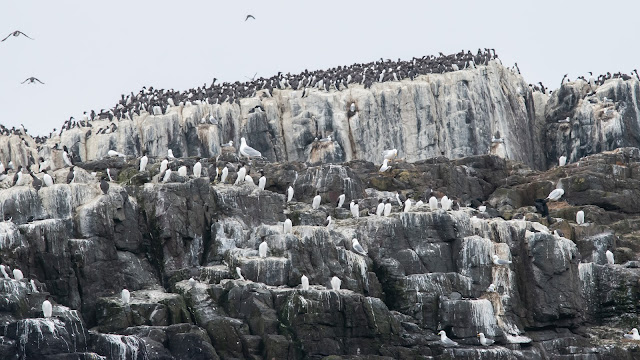The Magic of the Inner Farne Islands

In the afternoon of 10th June, we had booked a trip to Inner Farne, home of a multitude of seabirds - one of the best locations in the British Isles. This time of year, most breeds are plentiful, as they are busy raising young. So, blessing the calm day, we made our way to Seahouses, our point of embarking. The trip visits some of the outer islands, just for a brief look. This was interesting as we skirted the island housing the lighthouse from where Grace Darling and her father made their heroic rescue. Then passed large numbers of gray seals lazily watching us sail past. Finally, we landed on inner Farne to be dive bombed by Terns who were nesting near the landing point. Guillemot covering the rocks as we approached by the island. Longstone Lighthouse - our closest approach. Some trips actually land - but not ours. Grace Darling became a national heroine after risking her life to save the stranded survivors of the wrecked steamship Forfarshire in 1838....
